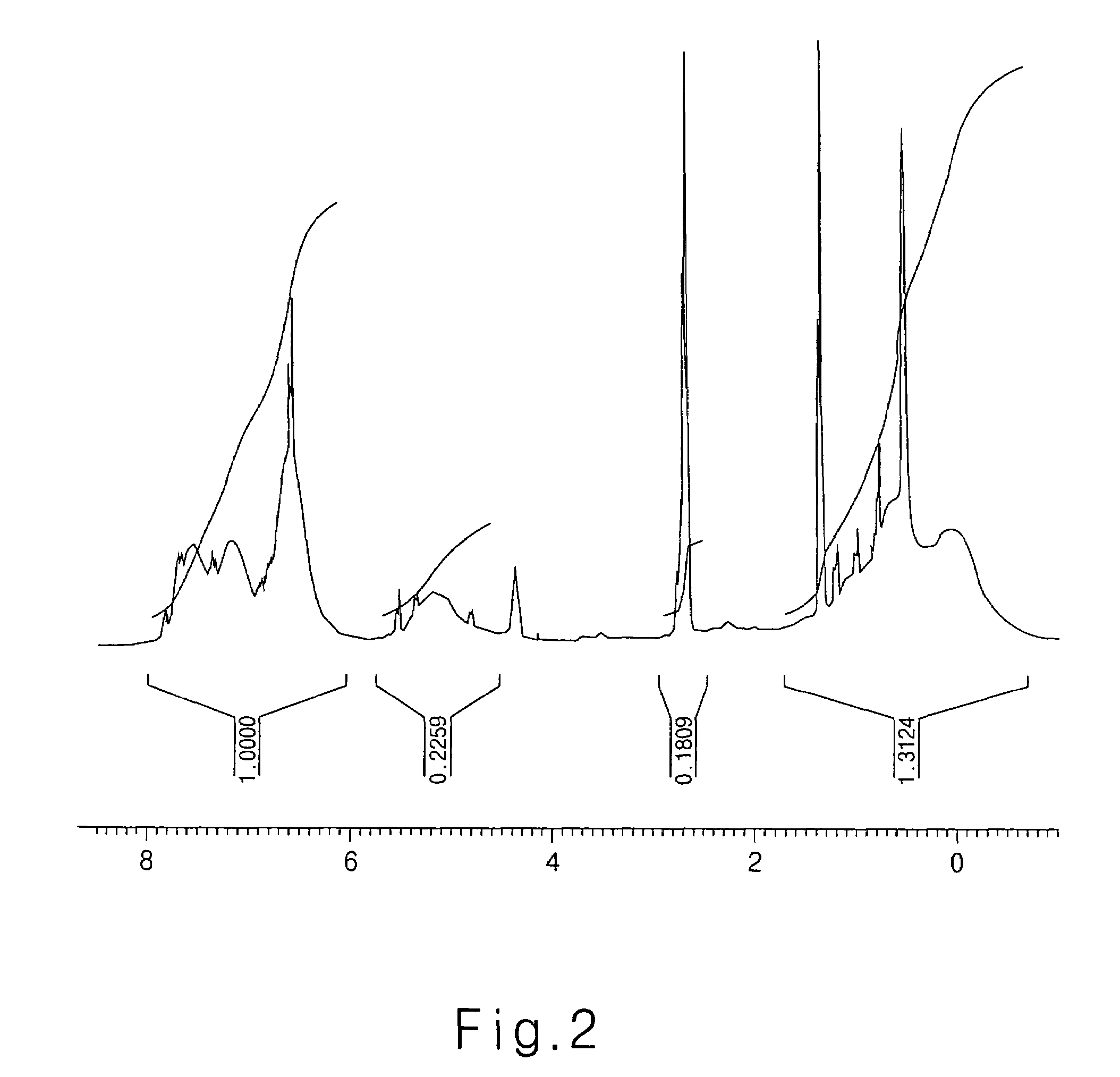Photoresist polymer and photoresist composition containing the same
a technology of photoresist polymer and composition, applied in the direction of photosensitive materials, auxillary/base layers of photosensitive materials, instruments, etc., can solve the problems of significant problems, inability to ensure sufficient etching resistance, and solubility differences in the developing solution
- Summary
- Abstract
- Description
- Claims
- Application Information
AI Technical Summary
Benefits of technology
Problems solved by technology
Method used
Image
Examples
example 1
Preparation of Photoresist Polymer (1)
[0052]To 50 g of propylene glycol methyl ether acetate (PGMEA) were added 5 g of 9-anthracenemethyl methacrylate, 1 g of 2-hydroxyethyl methacrylate, 3 g of t-butylacrylate, 1 g of acrylic acid and 0.4 g of AIBN. The prepared solution was reacted at 66° C. for 8 hours. After the reaction, the resulting mixture was precipitated in ethyl ether, filtered, and dried under vacuum condition, thereby obtaining poly(9-anthracenemethyl methacrylate / 2-hydroxyethyl methacrylate / t-butylacrylate / acrylic acid) having a molecular weight of 12,500 (yield: 88%) (see the NMR spectrum of FIG. 1).
example 2
Preparation of Photoresist Polymer (2)
[0053]To 50 g of PGMEA were added 6 g of 9-anthracenemethyl methacrylate, 3 g of t-butylacrylate, 1 g of acrylic acid and 0.8 g of AIBN. The prepared solution was reacted at 66° C. for 8 hours. After the reaction, the resulting mixture was precipitated in ethyl ether, filtered, and dried under vacuum condition thereby obtaining poly(9-anthracenemethyl methacrylate / t-butylacrylate / acrylic acid) having a molecular weight of 11,200 (yield: 80%) (see the NMR spectrum of FIG. 2).
example 3
Preparation of Photoresist Composition (1)
[0054]To 13 g of PGMEA as an organic solvent were added 1 g of the poly(9-anthracenemethyl methacrylate / 2-hydroxyethyl methacrylate / t-butylacrylate / acrylic acid) obtained from Example 1 and 0.04 g of triphenylsulfonium triflate as a photoacid generator. The resulting mixture was filtered in a 0.20 μm filter, thereby obtaining a photoresist composition.
PUM
| Property | Measurement | Unit |
|---|---|---|
| temperature | aaaaa | aaaaa |
| size | aaaaa | aaaaa |
| thickness | aaaaa | aaaaa |
Abstract
Description
Claims
Application Information
 Login to View More
Login to View More - R&D
- Intellectual Property
- Life Sciences
- Materials
- Tech Scout
- Unparalleled Data Quality
- Higher Quality Content
- 60% Fewer Hallucinations
Browse by: Latest US Patents, China's latest patents, Technical Efficacy Thesaurus, Application Domain, Technology Topic, Popular Technical Reports.
© 2025 PatSnap. All rights reserved.Legal|Privacy policy|Modern Slavery Act Transparency Statement|Sitemap|About US| Contact US: help@patsnap.com



